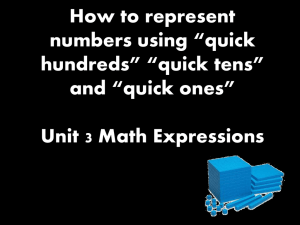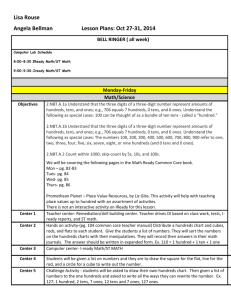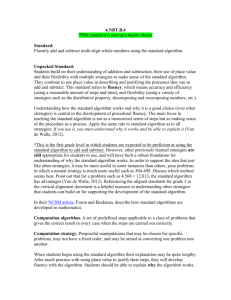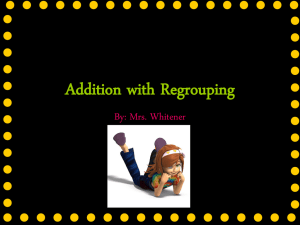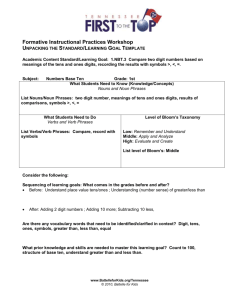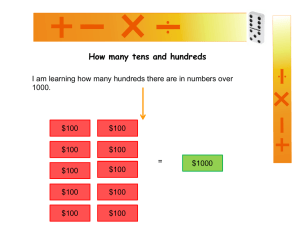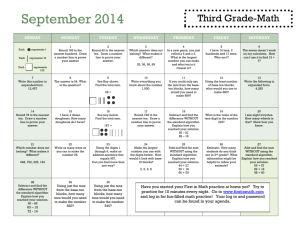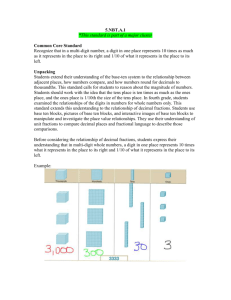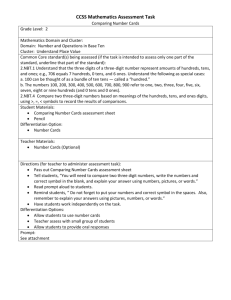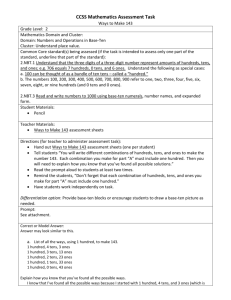Unit/ Module 3 What Your Child Will Learn
advertisement
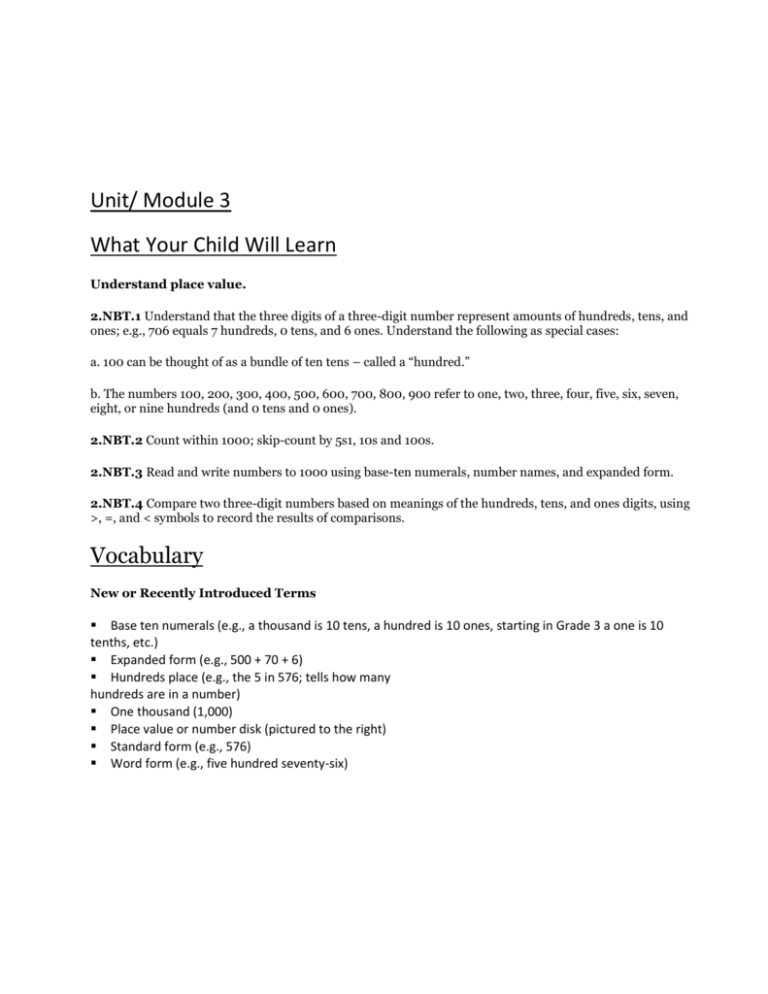
Unit/ Module 3 What Your Child Will Learn Understand place value. 2.NBT.1 Understand that the three digits of a three-digit number represent amounts of hundreds, tens, and ones; e.g., 706 equals 7 hundreds, 0 tens, and 6 ones. Understand the following as special cases: a. 100 can be thought of as a bundle of ten tens – called a “hundred.” b. The numbers 100, 200, 300, 400, 500, 600, 700, 800, 900 refer to one, two, three, four, five, six, seven, eight, or nine hundreds (and 0 tens and 0 ones). 2.NBT.2 Count within 1000; skip-count by 5s1, 10s and 100s. 2.NBT.3 Read and write numbers to 1000 using base-ten numerals, number names, and expanded form. 2.NBT.4 Compare two three-digit numbers based on meanings of the hundreds, tens, and ones digits, using >, =, and < symbols to record the results of comparisons. Vocabulary New or Recently Introduced Terms Base ten numerals (e.g., a thousand is 10 tens, a hundred is 10 ones, starting in Grade 3 a one is 10 tenths, etc.) Expanded form (e.g., 500 + 70 + 6) Hundreds place (e.g., the 5 in 576; tells how many hundreds are in a number) One thousand (1,000) Place value or number disk (pictured to the right) Standard form (e.g., 576) Word form (e.g., five hundred seventy-six) Familiar Terms and Symbols3 =, <, > (equal, less than, greater than) Altogether (e.g., 59 centimeters and 17 centimeters; altogether there are 76 centimeters) Bundling, grouping (putting smaller units together to make a larger one, e.g., putting 10 ones together to make a ten or 10 tens together to make a hundred) How many more/less (the difference between quantities) How much more/less (the difference between quantities) More than/less than (e.g., 576 is more than 76; 76 is less than 576) Number sentence Ones place (e.g., the 6 in 576; tells how many ones are in a number) Place value (the unitary values of the digits in numbers) Renaming, changing (instead of “carrying” or “borrowing,” e.g., a group of 10 ones is “renamed” a ten when the ones are bundled and moved from the ones to the tens place; if using $1 bills, they may be “changed” for a $10 bill when there are enough) Tens place (e.g., the 7 in 576; tells how many tens are in a number) Unit form counting (unit form counting states the amount of hundreds, tens, and ones in each number, e.g., 11 is stated as 1 ten 1 one, 20 as 2 tens, 27 as 2 tens 7 ones, 100 as 1 hundred, and 146 as 1 hundred 4 tens 6 ones.) Units of ones, tens, hundreds, one thousand (a single one and groups of 10s, 100s, and 1,000) Activities You Can Do At Home Skip count when counting groups of nickels and dimes. Count in a pattern while doing a rhythmic or repeated task – stirring pancake batter, brushing hair, putting away groceries, walking. Roll two dice to make a two digit number. Subtract it from 99 or 100. Represent two digit numbers with popsicle sticks - make bundles of ten for the tens and use single sticks for the ones. Roll dice to make two or three digit numbers with a partner. See who can make the larger number. Find or roll numbers and tell which place value each digit represents.

